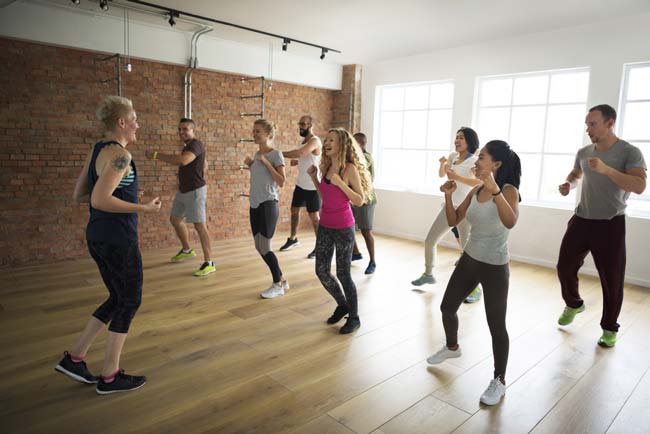The short answer? Yes.
But don’t confuse low-impact exercise with low-intensity exercise. They’re two entirely different things.
The word “impact” has multiple meanings, as seen in its two uses in the title of this article. When referring to exercise, impact means some part of the body coming into forceful contact with something solid.
So, when we’re referencing low-impact exercise, we mean exercise that requires less forceful impact against the body. But this type of exercise can still be highly effective and intense.
On the other hand, low-intensity exercise means just what it sounds like — it’s a less intense workout, requiring little exertion.
Let’s take a deeper dive into low-impact exercise and how it positively benefits the body.
Low-impact exercise vs. high-impact exercise
We’ve established that “impact” in terms of exercise means your body coming into contact with something solid. Based on that definition, many common forms of physical activity are considered high-impact.
This includes running, boxing, tennis and many other activities. When you’re running, for example, your feet are coming into pretty forceful contact with the pavement or the treadmill. And that effect intensifies as you increase your speed.
But if your body is feeling the strain from high-impact exercise, there are plenty of low-impact options that will still get your body moving and your heart pumping.
Low-impact exercises include:
- Walking
- Strength training (in most instances)
- Biking
- Rowing
- Yoga
- Pilates
- Swimming
- Water aerobics
- Dancing
Low-impact exercise & injuries
Whether you’re recovering after an injury or trying to avoid one, low-impact physical activity can be a good option.
That’s because you’re not physically putting more force on your body. While exercise benefits nearly everyone, high-impact activities can sometimes aggravate old injuries or wear on the bones and joints.
That’s where activities like swimming and water aerobics can be particularly beneficial. Being in the water helps take pressure off the joints, making the activity non-weight-bearing.
But even though you aren’t bearing weight, if you’re swimming laps or performing aerobics in the pool, you’re still getting in a good workout, particularly for your heart. A 2013 study from the State University of New York found that swimming helps lower heart rate and improve blood pressure, breathing and circulation.
But can low-impact exercise burn calories?
Absolutely it can! You can burn calories, get your heart pumping and build muscle, all without including forceful impact in your workouts.
When you’re in the water, for example, your body is having to push against the pressure of the water. Because that’s naturally difficult, the movement is effective. The faster you swim or the more intense your exercises are, the more effective the workout will be.
The same is true for other types of low-impact exercise.
Take walking — anyone who’s ever fast-walked their way to catch a bus or a cab knows that it’ll get your heart pumping. While walking is low-impact, it can still be high-intensity. You can amp up the intensity of the exercise by walking faster, walking longer, walking on an incline or walking while holding weights.
Who is low-impact exercise good for?
Anyone can benefit from incorporating low-impact exercise into their routine. Experts recommend getting at least 150 minutes of moderate physical activity each week — which averages out to just more than 20 minutes each day.
As long as you’re performing your low-impact activity at a moderate intensity, your exercise fits the bill! But what’s that mean? Well, essentially, you want to be exerting around a 10 or 12 on an intensity scale of 1–20.
But beyond that, certain groups of people can especially benefit from low-impact exercise.
That includes those with current or chronic injuries, those recovering after an illness or surgical procedure, or those who deal with recurrent conditions impacting the joints, like arthritis.
For those groups, low-impact activity provides an opportunity to remain physically active while avoiding excessive stress on the body. That’s a win-win.
Wondering what types of physical activity would work best for your health? Talk with your doctor. Need a doctor? Find one here.







